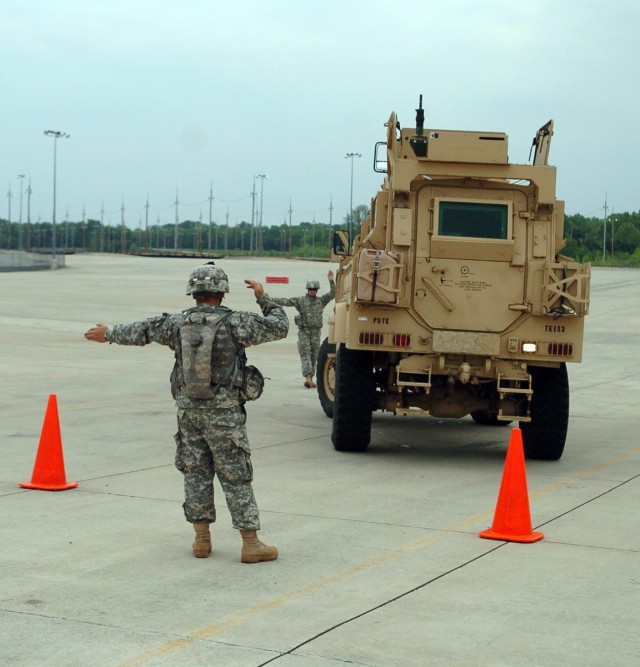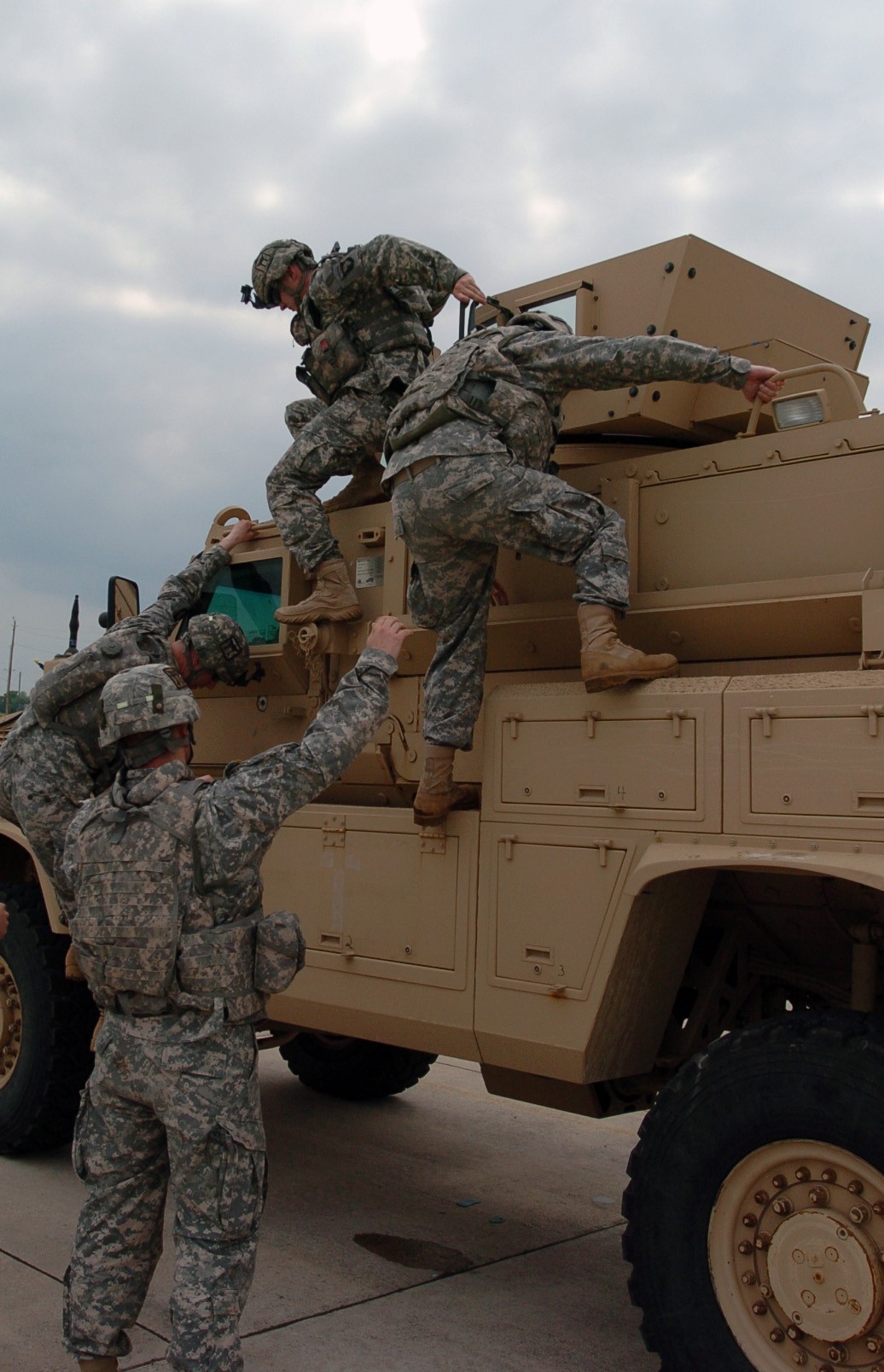For the first time at Fort Campbell, Soldiers are being trained on the Mine-Resistant, Ambush-Protected vehicle.
The training is hosted by 3rd Brigade Combat Team, 101st Airborne Division, at the 3rd Special Troops Battalion consolidated motorpool. Units within the division received slots for student participation in the classes.
"The training was brought down through [U.S. Forces Command] when they sent word down to our company that we needed to send a mobile team out to train Soldiers at Fort Campbell," said Kyle Dorr, site lead for the MRAP vehicle training classes with TJ Fig Incorporated, based out of Red River Army Depot, Texas. "My company selected teams to come here to Fort Campbell, go to Fort Drum, N.Y., Fort Carson, Colo., or wherever the training is needed."
The classes are set for 10 week-long iterations which began the week of April 20, and will continue until the week of June 22.
The Soldiers will receive instruction on two separate types of MRAPs, the RG-31 and the MaxxPro. Soldiers are required to qualify as both drivers and trainers during day- and night-training operations.
Operator instruction consists of preventive maintenance checks and service of the vehicle; egress, which teaches the Soldiers how to evacuate the vehicles in emergency situations; vehicle recovery operations and teaching how to recover rolled-over vehicles. They also review safety warnings, precautions, and ground-guide procedures. The course culminates with a written test.
In addition to operators and trainers, each week there are seven slots allowed for mechanics to go through a field-maintenance course on both MRAPs.
"We teach them how to troubleshoot the electrical systems, air conditioning systems, brakes and anything they will need to know how to repair throughout the vehicles," Dorr said. He explained that the students learn the characteristics of the vehicles. The instructors go from bumper to bumper, teaching them everything they can about the vehicles.
According to Dorr the students are enjoying the class and everyone seems to be grasping onto the material very well.
Soldiers from units outside Fort Campbell are also enrolled in the class.
"I believe that this training is very important since this is the equipment we are going to be using during deployments," said Sgt. Joshua Bryant, section sergeant with 267th Quartermasters Company, 240th Quartermasters Battalion, 49th Quartermasters Group, from Fort Lee, Va. "This is some outstanding training being taught by some very knowledgeable civilian instructors, most of [whom] have prior military service. It's all about training the Soldiers, and they're doing a fantastic job."
Bryant was selected by his unit to receive the training so he can take his gained knowledge back to his unit and train his Soldiers up on the MRAPs.
"This is some of the most high-speed training I have seen since I have been in the Army," said Bryant, who hadn't had any experience with MRAPs prior to the course. "I am going to get the classes to be an instructor so I can take it back to Fort Lee and have a class for my 17 Soldiers."
After the final scheduled class is completed in June, Dorr said his team may return to Fort Campbell again in August to conduct more training.
"The training gives the students a good feel for the vehicles, but [the MRAP] also gives them a better sense of security than they would have in a humvee," Dorr said. "There is more protection on the MRAP than there is on a humvee, so they can feel much safer in an MRAP."




Social Sharing